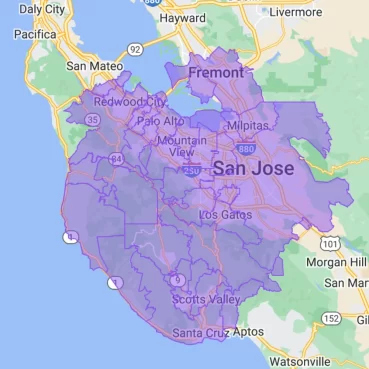In today’s digital age, businesses face a wide array of threats, both physical and digital. While many companies focus on securing their physical premises—installing security cameras, alarm systems, and access controls—cybersecurity often takes a backseat. However, with the increasing reliance on technology and the internet, cybersecurity is just as crucial as physical security for comprehensive business protection. In this article, we’ll explore why cybersecurity matters as much as physical security and how integrating both can safeguard your business from a broad spectrum of threats.
The Evolving Threat Landscape
The threat landscape for businesses has evolved dramatically in recent years. While traditional physical threats like theft, vandalism, and unauthorized access remain prevalent, digital threats have surged, posing significant risks to businesses of all sizes.
- Physical Security Threats: These include break-ins, vandalism, theft of physical assets, and unauthorized access to sensitive areas within the business premises. Physical security measures such as CCTV cameras, access control systems, and alarms are essential for protecting against these threats.
- Cybersecurity Threats: These involve attacks on your business’s digital infrastructure, such as hacking, phishing, malware, ransomware, and data breaches. Cyberattacks can lead to the loss of sensitive data, financial losses, and reputational damage.
As businesses become more interconnected and reliant on digital systems, the line between physical and digital security is blurring. A comprehensive security strategy must address both physical and cybersecurity to provide robust protection.
Why Cybersecurity is Crucial for Business Protection
Cybersecurity is critical because the consequences of a successful cyberattack can be devastating. Here’s why cybersecurity matters as much as physical security:
1. Protecting Sensitive Data
One of the primary reasons cybersecurity is essential is the need to protect sensitive business data. This includes customer information, financial records, intellectual property, and employee data. A data breach can lead to severe consequences, including legal liabilities, financial losses, and damage to your company’s reputation.
- Data Encryption: Implementing encryption for sensitive data both at rest and in transit ensures that even if data is intercepted, it cannot be easily accessed by unauthorized individuals.
- Access Controls: Just as you would control who can enter your physical premises, you should control who can access your digital assets. Use strong passwords, multi-factor authentication, and role-based access controls to limit access to sensitive information.
2. Preventing Financial Losses
Cyberattacks can lead to significant financial losses, not only from the direct costs of the attack but also from the downtime, lost productivity, and potential legal fees associated with the breach. For example, ransomware attacks can lock you out of your systems until a ransom is paid, while phishing scams can lead to fraudulent transactions.
- Firewalls and Antivirus Software: These are the first lines of defense against cyber threats. Firewalls monitor and control incoming and outgoing network traffic, while antivirus software protects against malicious software.
- Regular Software Updates: Ensuring that all your systems and software are up-to-date can prevent cybercriminals from exploiting known vulnerabilities.
3. Safeguarding Business Continuity
A cyberattack can disrupt your business operations, leading to downtime and loss of revenue. For some businesses, especially those in critical industries, even a short interruption can have severe consequences.
- Data Backups: Regularly backing up your data ensures that you can quickly restore operations in the event of a cyberattack. Store backups in a secure, offsite location or use cloud-based backup solutions.
- Disaster Recovery Plan: A well-defined disaster recovery plan should include steps for responding to cyber incidents, restoring operations, and communicating with stakeholders.
4. Enhancing Customer Trust
Customers trust you to protect their personal information. A data breach can erode that trust, leading to customer churn and a damaged reputation. In today’s competitive business environment, maintaining customer trust is paramount.
- Secure Payment Systems: If your business processes payments, ensure that your payment systems comply with industry standards like PCI-DSS. Secure payment systems protect against fraud and reassure customers that their information is safe.
- Privacy Policies: Clearly communicate how you handle customer data and what measures you take to protect their privacy. Transparency builds trust and demonstrates your commitment to security.
5. Compliance with Regulations
Many industries are subject to strict regulations regarding data protection and cybersecurity. Failure to comply with these regulations can result in hefty fines and legal penalties. Examples of such regulations include the General Data Protection Regulation (GDPR) in Europe and the California Consumer Privacy Act (CCPA) in the United States.
- Compliance Audits: Regularly audit your cybersecurity practices to ensure compliance with relevant regulations. This may involve working with legal experts or cybersecurity consultants.
- Employee Training: Ensure that your employees are aware of their responsibilities regarding data protection and cybersecurity. Regular training sessions can help prevent accidental breaches and promote a security-conscious culture.
Integrating Physical Security and Cybersecurity
For comprehensive business protection, it’s essential to integrate physical security measures with cybersecurity practices. Here’s how you can achieve this integration:
1. Unified Access Control
Implement a unified access control system that manages both physical and digital access. For example, a smart access control system can require employees to use a single credential (such as a keycard or biometric scan) to access both the physical premises and the company’s digital systems.
- Single Sign-On (SSO): Implement SSO solutions that allow employees to access multiple systems with one set of login credentials. This simplifies access management and enhances security.
- Visitor Management: Use visitor management systems that track who enters your premises and ensure that visitors do not have access to sensitive areas or data.
2. Video Surveillance and Network Security
Modern video surveillance systems often rely on IP cameras that are connected to your network. Ensuring that these cameras are secure is vital to prevent unauthorized access.
- Network Segmentation: Isolate your video surveillance network from other critical business networks to minimize the risk of a cyberattack spreading.
- Secure Configurations: Ensure that all cameras and other networked devices are configured with strong passwords and updated firmware to protect against hacking.
3. Incident Response Coordination
In the event of a security breach—whether physical or digital—having a coordinated incident response plan is crucial. Your incident response plan should address both physical and cybersecurity threats and outline how they will be handled.
- Cross-Functional Teams: Create incident response teams that include members from both physical security and IT departments. This ensures that all aspects of a security breach are addressed.
- Regular Drills: Conduct regular security drills that simulate both physical and cyber incidents. This prepares your team to respond effectively in a real emergency.
4. Employee Awareness and Training
Employees are often the first line of defense against both physical and cyber threats. Regular training and awareness programs can help prevent security breaches caused by human error.
- Phishing Awareness: Educate employees on how to recognize phishing attempts and other common cyber threats. This can prevent attacks that rely on social engineering.
- Physical Security Protocols: Ensure that employees understand the importance of physical security measures, such as locking doors, securing equipment, and reporting suspicious activity.
Conclusion: The Need for Comprehensive Security
In today’s interconnected world, businesses cannot afford to view physical security and cybersecurity as separate entities. Both are critical components of a comprehensive security strategy that protects your assets, data, and reputation. By integrating cybersecurity measures with physical security practices, you can create a robust defense against the wide range of threats facing businesses today.
At Guardyx, we understand the importance of comprehensive security. Our team of experts is dedicated to providing top-notch physical and cybersecurity solutions tailored to meet the unique needs of your business. Whether you need a state-of-the-art surveillance system, access control, or cybersecurity consulting, we’re here to help you safeguard your business from all angles.
About Guardyx
Guardyx is your trusted provider of smart home security and automation solutions in the San Francisco Bay Area and Silicon Valley. Whether you need CCTV installation, comprehensive security systems for your home or business, or smart home integration, we offer tailored services to meet your unique needs. Our expert team ensures that your property—whether residential or commercial—is protected with the latest technology, providing peace of mind and convenience.
Our Services:
- CCTV Camera Installation
- Home Security Systems
- Smart Home Automation
- Remote Monitoring Solutions
- Business Security Solutions
- Commercial Surveillance Systems
Serving Areas:
San Francisco, San Jose, Palo Alto, Mountain View, Sunnyvale, Santa Clara, Cupertino, Menlo Park, Redwood City, Fremont, Oakland, Berkeley, San Mateo, and the entire Silicon Valley.
Ready to Secure Your Property?
Request a service: https://guardyx.com/home/#contact




